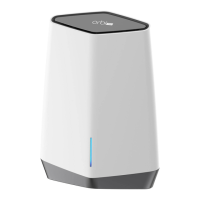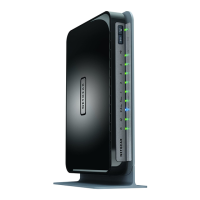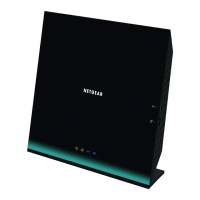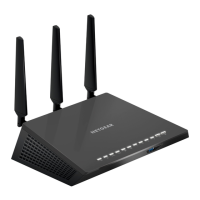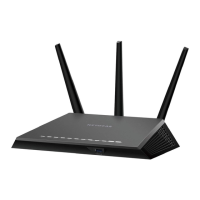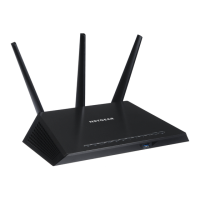time-to-live (TTL) value of 1 and a ToS byte of 0xC0 (Internetwork Control). In addition,
the router alert IP option (9404) must be set.
Note: If IGMPv3 IP header validation is enabled, switch does not drop IGMPv1 and
IGMPv2 traffic but processes this traffic normally.
To manage IGMPv3 IP header validation:
1.
Open a web browser from a computer that is connected to the same network as the
switch or to the switch directly through an Ethernet cable.
2. Enter the IP address that is assigned to the switch.
The login page displays.
3. Enter the switch password.
The default password is password. The password is case-sensitive.
The HOME page displays.
4.
From the menu at the top of the page, select SWITCHING.
The Quality of Service (QoS) page displays.
5.
From the menu on the left, select MULTICAST.
The MULTICAST page displays.
6. Enable or disable IGMPv3 IP header validation by clicking the button in the Validate
IGMPv3 IP Header section.
When IGMPv3 IP header validation is enabled, the button bar displays green.
7.
Click the APPLY button.
Your settings are saved.
Set Up a Static Router Port for IGMP Snooping
If your network does not include a device that sends IGMP queries, the switch cannot
discover the router port dynamically. (The router port is a port on a device in the network
that performs IGMP snooping in the network.) In this situation, select one port on the
switch as the dedicated static router port for IGMP snooping, allowing all IGMP Join
and Leave messages in the network to be forwarded to this port.
To set up a static router port for IGMP snooping:
1.
Open a web browser from a computer that is connected to the same network as the
switch or to the switch directly through an Ethernet cable.
2. Enter the IP address that is assigned to the switch.
User Manual78Manage the Switch in Your
Network
Nighthawk S8000 Gaming & Streaming Advanced 8-Port Gigabit Ethernet Switch (GS808E)

